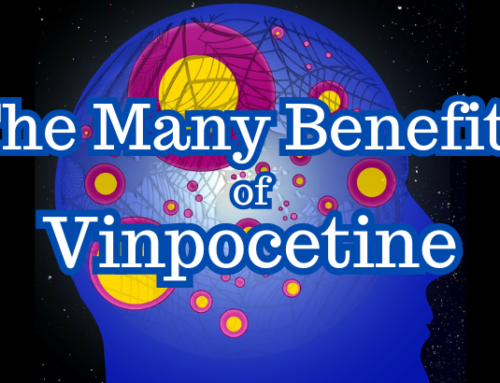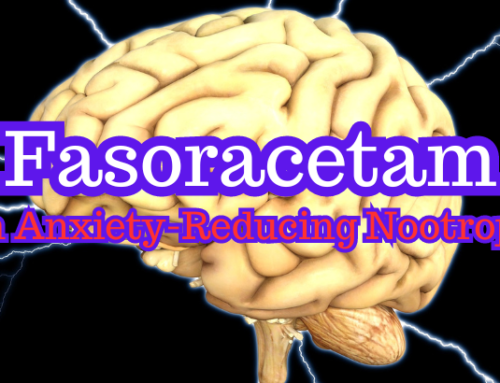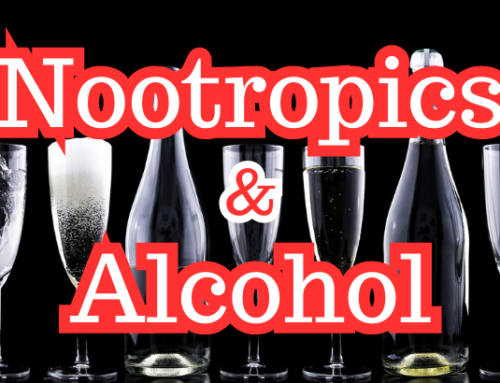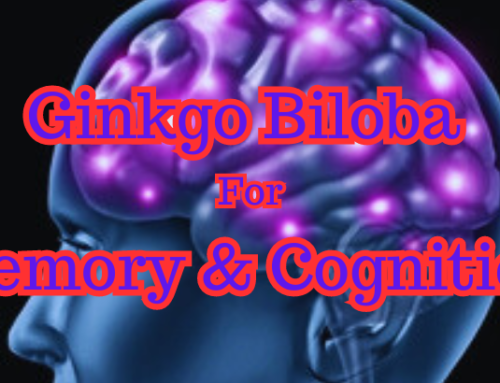It's no secret that interest in nootropics has been exploding over the past couple years. With the popularity of films and TV shows like Limitless, the idea of using drugs to enhance brain function is no longer limited to bio-hackers and transhumanists. Mainstream society is now taking an interest in nootropics.

Also known as smart drugs, cognitive enhancers, and about a dozen other names, nootropics are substances that improve one or more aspects of cognitive functioning (memory, focus, mood, anxiety, alertness, etc.). They can be drugs, supplements, vitamins, minerals, plants, herbs, or anything else that improves brain function.
There are many different types of nootropics. They come from several different categories of substances. We're going to break them down into 7 different types. Each type of nootropic works differently in the body and brain. Here's the different types of nootropics:
The Different Types Of Nootropics
Racetams
The racetams are a well-known type of nootropic. In fact, it was the creation of the first racetam, piracetam, that inspired the creation of the word “nootropic.” In 1964, piracetam was first synthesized by the Romanian chemist Corneliu Giurgea. In 1972, he coined the term “nootropic” to describe substances that improve cognitive functioning.
The racetams all share a similar chemical backbone with a pyrrolidone nucleus. They are all based off of the first racetam, piracetam. While the effects of the racetams vary from one to another, several of them are known to influence the neurotransmitters acetylcholine and glutamate.
Each racetam has a different set of nootropic benefits. Some, like aniracetam, improve memory and reduce anxiety. Others, like phenylpiracetam and oxiracetam, act as mild stimulants. Most of the racetams seem to improve at least one aspect of mental functioning.

Examples of racetams:
Cholinergics
Cholinergics are another type of nootropic. These are compounds that increase levels of choline or acetylcholine in the brain. Acetylcholine is a neurotransmitter that is known to play a role in memory, motivation, focus, and muscle activation.
Cholinergics can increase levels of acetylcholine in the brain two different ways. They can either increase the levels directly by creating more acetylcholine, or increase it indirectly by preventing existing acetylcholine from breaking down.
It is common for nootropics users to stack a cholinergic with one or more racetams. There are two reasons for doing this. First, several racetams are known to work (at least in part) by influencing acetylcholine in the brain. By taking a cholinergic, you increase your level of acetylcholine in the brain, thus enhancing the effects of taking a racetam.

Examples of cholinergics:
- Alpha-GPC
- CDP-Choline (citicoline)
- Choline
- Centrophenoxine
- Huperzine-A
Eugeroics
This is a relatively new class of drugs. Eugeroics are drugs or other substances that promote wakefulness. They are used clinically to treat sleeping disorders, narcolepsy, excessive daytime sleepiness, and other conditions.
Eugeroics are very popular in the nootropics community. They share many of the same benefits as stimulants, but without most of the side effects. These benefits can include increased alertness, wakefulness, focus, motivation, and improved mood.
 As of right now, there are only 3 drugs in this category: modafinil, armodafinil, and adrafinil. The first two are prescription drugs in some countries, approved to treat Adrafinil was a prescription drug in France until 2011, when it was discontinued. All three are available from different online nootropic vendors.
As of right now, there are only 3 drugs in this category: modafinil, armodafinil, and adrafinil. The first two are prescription drugs in some countries, approved to treat Adrafinil was a prescription drug in France until 2011, when it was discontinued. All three are available from different online nootropic vendors.
Examples of eugeroics:
Adaptogens
Adaptogens are substances that help to stabilize the body and brain, especially when stressed. While each adaptogen is unique, they all affect several bodily systems. Not all adaptogens are nootropics. However, several adaptogens have potent nootropic properties.
Many adaptogens are plants and herbs. Some of them have been used in Ayurvedic medicine and other Eastern medical traditions for centuries. They have been used (to varying degrees of success) to treat dozens of different conditions, and also as a general healing tonic.

Examples of adaptogens:
Stimulants
Stimulants are substances that cause improvements in mental and/or physical functioning. Also called psychostimulants, this type of nootropic causes an increase in wakefulness, alertness, and motivation. Several stimulants are also known to improve mood and reduce the symptoms of depression.
It should be noted that, by some definitions, most stimulants are not true nootropics. This is because they can be habit forming, and over time can lose their effectiveness. However, we are including them here because stimulants are widely used and unquestionably have nootropic properties.
The most commonly used stimulant is one that you may have already used today: caffeine. Not only is it the world's most used stimulant, but it's the also the world's most used psychoactive drug. It has been extensively studied, and is known to improve wakefulness, alertness, and other aspects of cognitive functioning.
Some of the more powerful stimulants are only available with a prescription. These include drugs like Adderall (mixed amphetamines), Vyvanse (lisdexamfetamine), Ritalin (methylphenidate), and Concerta (time-release methylphenidate). They are used to treat a number of conditions, including attention deficit-hyperactivity disorder (AD/HD), narcolepsy, and chronic fatigue syndrome.

Examples of stimulants:
- Caffeine
- Amphetamines (Adderall, Vyvanse, Desoxyn)
- Methylphenidate (Ritalin, Concerta)
- Nicotine
- Ephedrine
Precursors
This is another class of substances that isn't commonly thought of as nootropics. However, these substances can all have significant nootropic effects.
Simply put, a precursor is a substance that converts into another substance in the body. Through a series of chemical reactions, precursors assist in the creation of different compounds in the body and brain.

Examples of precursors:
- L-Dopa (precursor to dopamine)
- L-Tyrosine (precursor to l-dopa, dopamine)
- L-Tryptophan (precursor to 5-HTP, serotonin)
- 5-HTP (precursor to serotonin, melatonin)
- Glutamine (precursor to gamma-aminobutyric acid [GABA])
Misc/Other
Most cognition-enhancing substances fit into one or more of the types of nootropics listed above. However, there are some that don't quite fit into any of those categories.

Here are some examples of substances with nootropic properties that don't fit into any of the other categories:
- L-Theanine
- Sulbutiamine
- Omega 3 Fatty Acids
- Uridine
- Vinpocetine
- Acetyl L-Carnitine (ALCAR)
Conclusion
As you can see, substances with nootropic properties aren't limited to one type. Nootropics come from a variety of different categories.
As time goes on, science progresses, and more nootropics are created, we'll likely see entirely new types of nootropics. There are actually new drugs with potential nootropic properties in clinical trials now that are in a brand new class of substances. It will be interesting to see the advances made in the relatively new and always exciting field of nootropics over the coming years.
If you want to stay in-the-loop about new nootropics, current trends in nootropic use, and information about existing nootropics, make sure to sign up for the Nootropics Zone newsletter. As a thank you for signing up for the newsletter, you'll get the 17-page PDF The Ultimate Nootropics Quick Reference Guide absolutely free!







Hi, any updates about Lion’s Mane Mushroom?
I don’t know why, but I didn’t see this comment until just now. Sorry for the 11.5-month delay. I published a post about Lion’s Mane in 2018 that is scheduled to be updated at some point this year: https://nootropicszone.com/the-nootropic-benefits-of-lions-mane/